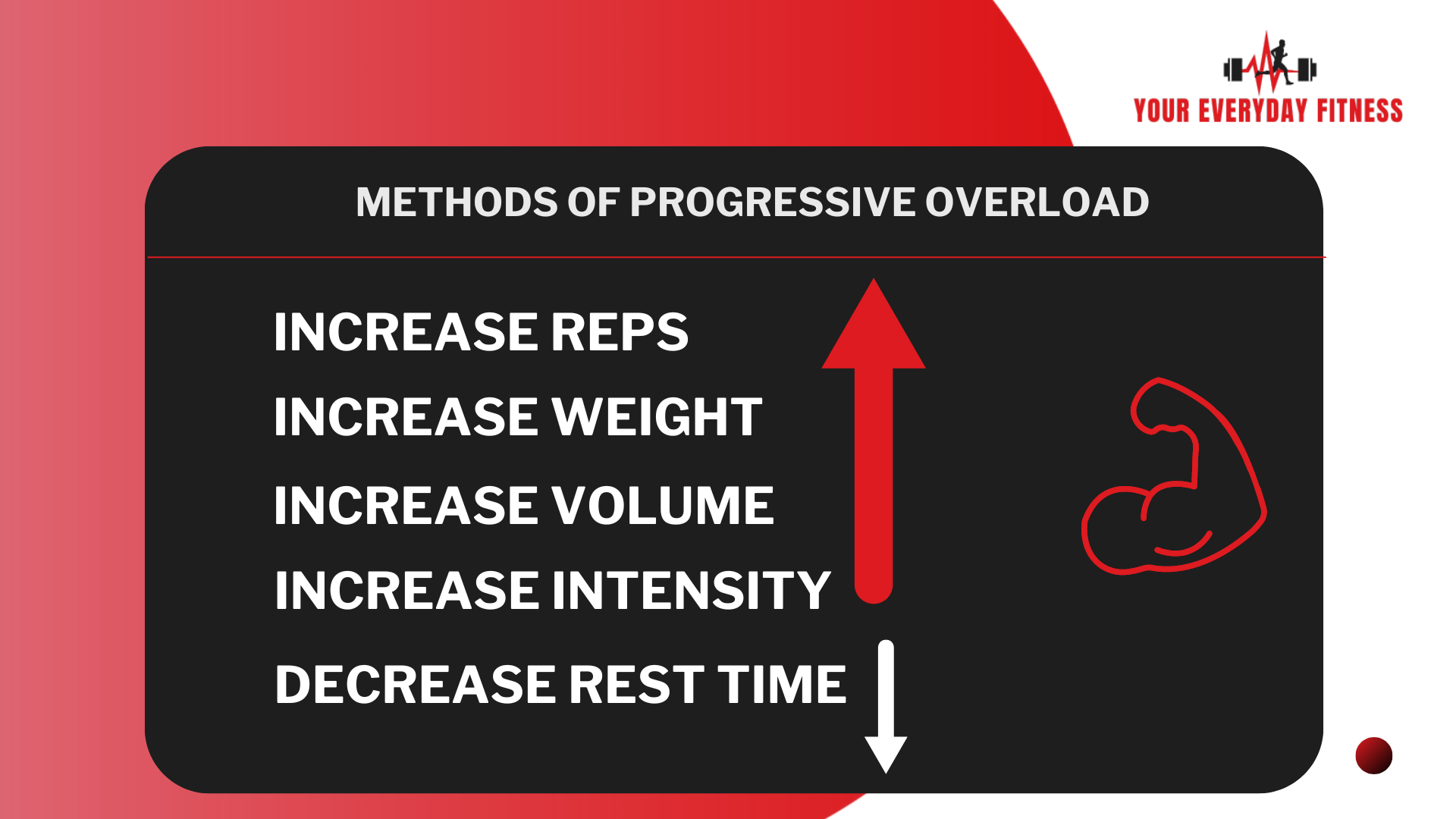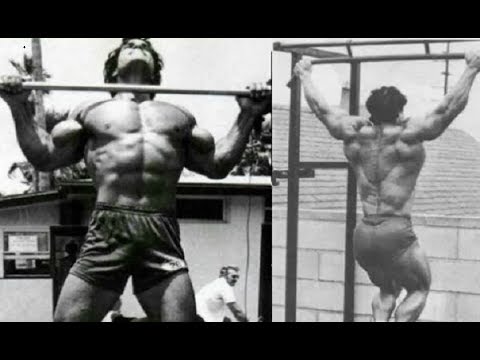What is Strength Training?
Strength training, also known as resistance or weight training, is a form of exercise that uses resistance such as free weights, machines, resistance bands, or just your body weight. The goal of strength training for beginners is to increase muscle strength and size.
It is an amazing form of working out that anyone can pickup and start to try. I recommend it to anyone and everyone. It looks like you want to learn more about strength training for beginners, so let’s get into it!
My Personal Experience with Strength Training

When I first started strength training, I had no idea how much it could change my life. I was weak and lacking self confidence, just wanting to get a little bigger and stronger, but in reality I found a passion that not only completely changed my physical health, but strengthened my mind and drastically improved all facets of my life.
In the beginning it was hard, I won’t lie. Walking into a big gym full of experienced lifters was intimidating. I had to start with light weights and didn’t know exactly what to do, but I just kept going and trying to improve. Strength training is for everyone, no matter what your age is or where your levels of fitness currently are. It is for anyone who is willing to keep trying in order to become a better version of themselves.
A few weeks into it, I could lift a little bit more than I used to be able to, and that feeling of pride and accomplishment was something I wasn’t used to. I started to enjoy the work, and was excited to improve myself. Self-love started to build just like my strength levels, because I had found something that made me feel good, and something that I could be good at!
Day after day, week after week, month after month, and year after year, I saw my muscles get bigger, my strength improve, and my mental health reach new heights. I have fallen in love with strength training because it has given me so much, and I know it can do the same for you, so I am glad you are here.
Benefits of Strength Training for Beginners

Like I said, strength training has tons of benefits, especially if you’re just starting out. Whether you want to build muscle, get stronger, lose weight or just feel better overall each and every day, adding strength training to your weekly routine can make a big difference. Here are some of the benefits you can expect to come with this kind of training:
1. Get Stronger and Build Muscle
The most obvious benefit to strength training is the ability to build muscle mass and gain strength. By doing resistance exercises regularly, you can get stronger and build lean muscle. This not only makes you perform better physically but also boosts your metabolism, which means you can burn calories faster, allowing you to manage your weight easier.
Krzysztofik et al. (2019) conducted a study which showed that 3–6 sets of 6–12 repetitions at 60–80% of 1 repetition maximum (1RM) promotes optimal muscle growth.
2. Better Bone Health
One benefit of strength training that is a little less well known is how great lifting weights is for your bones, which is super important as you get older. Involving strength training into your regular routine can help increase bone density, lowering the risk of osteoporosis and keeping your bones strong. It’s a great way to invest in your long-term health.
3. Functional Fitness
Strength training isn’t just about lifting heavy weights in the gym; it also helps you do everyday tasks more easily. By doing exercises that work multiple muscle groups, you build functional strength and stability. Your balance, posture, and overall performance each day will improve. Think about it, even bringing in the groceries or carrying the load of laundry will become easier.
4. Boost Your Metabolism
Strength training boosts your metabolism, both during and after your workout. As you build muscle, your body needs more energy to maintain and repair it. This means you burn more calories even when you’re resting, making it easier to keep a healthy weight.
I know that I benefited from this greatly. I used to find it very difficult to lose weight, but after I started strength training, I quickly found myself losing weight and fat even before changing my diet too much.
5. Mental Health Benefits
To me, this was the most important benefit of strength training. Physical health is great but mental health is everything.
Regular exercise releases endorphins, which make you feel good. It can help reduce stress, anxiety, and depression, and even improve your sleep and brain function. Strength training makes you feel good, like you accomplished something and are better than you were yesterday (Strickland & Smith, 2014).
On top of that, when you are strength training, you are solely focused on that. When you’re in the middle of a hard strength training workout, you aren’t worrying about a bunch of other things, so it gives you a mental break in your day where your brain can relax. THAT IS AMAZING.
As you start your strength training journey, remember that consistency and patience are key. Start with a beginner-friendly workout plan and continue to increase the intensity as you get more comfortable. Don’t be afraid to ask a professional trainer or a more experienced friend for help to make sure you’re doing things right.
Strength training is an amazing process that will not only make you stronger but also boost your confidence and overall well-being. The key to success is to enjoy the process, and celebrate every win along the way. When I started to celebrate the grind, that is when things really took off for me.
Getting Started the Right Way
Before you just jump into lifting weights at the gym, it’s important to make sure you make a plan first. Let’s aim for a beginner friendly workout plan that can help you get a good understanding of some key strength training principles.
Building Your First Workout Plan

When you’re just starting out, it’s all about building a strong foundation and slowly getting more and more intense. Here’s how to get started:
- Pick the Right Exercises: Go for exercises that hit the bigger muscle groups and will help you build overall strength. Think exercises like squats, deadlifts, bench presses, and pull-ups. These compound exercises work multiple muscles at once, giving you the most bang for your buck. Need more details? Check out our blogs on squat form improvement, core strength exercises, and pull-up progressions.
- How Often to Train: Aim to work each major muscle group around two times a week. This gives your muscles enough training work to grow but also enough time to recover. Don’t forget to input rest days in your calendar to let your body bounce back.
- Making Progress: Start light and focus on your form. Reps with heavy weight but bad form are just about useless. As you get stronger, you can up the weight and change your reps and sets. This slow increase, known as progressive overload, is the key to getting stronger.
- Rest and Recovery: Your muscles need time to repair and grow, so don’t skip out on rest. Listen to your body and take breaks when needed. Also make sure you’re getting enough sleep. For more recovery tips, check out our article on strength training recovery.
The Basics of Strength Training

To get the most out of your workouts, you need to understand a few key principles:
- Progressive Overload: This means gradually making your workouts harder by adding weight, doing more reps, or increasing sets. It’s the secret for getting stronger. This was the key for me breaking through with my bench press, and I was able to add 40 lbs to my press in one summer because of it. If you want to learn more about the best rep ranges, read our article on rep ranges for strength.
- Increasing load slightly has been shown to favor strength gains, leading to an increase in one-rep max (1RM) by 21.8 kg on average for squats (Plotkin et al., 2022).
- Form and Technique: Good form is crucial. It keeps you safe and makes your workouts more effective. Focus on posture, muscle engagement, and full range of motion. If you’re unsure, get a trainer or watch some how-to videos. Bad form can lead to injuries and slow your progress. My go-to move is to look at myself in the mirror as I lift, that way I can keep my form in check.
- Hydration and Nutrition: Your body needs fuel and hydration to build muscle. Focus on eating a balanced diet with plenty of protein, carbs, and healthy fats. Also make sure you are drinking enough water throughout the day and especially during and after training sessions. For more on what to eat, check out our guide on nutrition for strength training.
Now that you understand some of the key principles of strength training, you can make a proper workout plan to set yourself up for success and keep you from looking like a chicken with its head cutoff in the gym when you first show up.
Some Key Strength Training Exercises for Beginners
Let’s get you going with some must-do exercises that will help you build a solid foundation. These exercises will help you target all major muscle groups and will also help you build muscular endurance.
Here are four beginner-friendly exercises to get started:
1. Squats

Squats are the oldest and most trusted of all lower body exercises. They hit your quads, hamstrings, and glutes, while also giving your core a good workout.
You can do them with just your own body weight or you can use dumbbells or a barbell for extra challenge. The key here is form. Squatting with weights but bad form will lead to a bunch of injuries that will not go away quickly. Please save yourself from this mistake. Check out our guide on squat form improvement for more.
2. Deadlifts

Deadlifts are another backbone exercise that serves as maybe the best of all compound exercises. Deadlifts hit your glutes, hamstrings, and lower back. They also work your core, upper back, and grip strength.
With the deadlift, it is vital that you start with lighter weights to focus on the form before going heavy. Trust me, your back will thank you. I know people who have tried differently and ended up needed surgery. Not fun.
3. Bench Press

The bench press is the king of upper body exercises for strength, mainly targeting your chest but also working your triceps and shoulders. You can use a barbell or dumbbells.
Always keep your form in check and use weights that fit your strength level. If you want to try some heavier weight, just ask someone for a spot, or use some extra safety equipment. Don’t let your ego allow a bench press to crush you.
4. Pull-Ups

Pull-ups are tough but they are an amazing exercise building upper body strength. They work your back, biceps, and shoulders. If a full pull-up seems impossible right now, start with assisted versions using a resistance band or a pull-up machine. As you get stronger, you’ll be doing unassisted pull-ups in no time.
When I first started, i used the assisted pull-ups until I could do 5 pull-ups unassisted. Then I just worked at them each and every week, and before I knew it I could do sets of 15-20 no problem, and even started adding weight on a weight belt. Pull-ups have been a great help for building my upper body.
Adding these exercises to your routine will help you build a strong, balanced body. Start light, focus on maintaining proper form, and gradually up the intensity. If you’re ever unsure about an exercise, consult a trainer at your gym or any more-experienced individual that you know in order to make sure you’re doing it right and safely. Keeping consistent is the key.
Progressing Safely

Yes you should start strength training, but no, you shouldn’t just jump in head first. Track your progress, and avoid common mistakes in order to get the most out of it.
Tracking Your Progress
Tracking my progress was the best thing I ever did in strength training, and it helped me make gains significantly faster than if I didn’t.
Keeping tabs on your progress isn’t just for bragging rights. It’s your roadmap to gains. Here’s how to do it right:
- Workout Journal: Grab a notebook or a fitness app. Jot down your exercises, sets, reps, and weights. You’ll be able to see patterns, track gains, and know exactly how far you’ve come. I used to just jot it in my notes app, if that interests you.
- Strength Tests: Every now and then, test yourself with benchmarks lifts like squats, deadlifts, bench presses, or pull-ups. Write down your numbers and compare them over time. Make sure to grab a spotter for these tests. These will help you figure out how far you really have come.
- Body Measurements: The scale doesn’t always tell the story. Especially when you are building muscle, you may lose fat but not necessarily lose weight. Use a tape measure for your chest, waist, hips, arms, and thighs. These numbers will show changes in your physique that the scale might miss.
- Progression Models: Don’t just lift the same weights forever. Gradually increase the weight, sets, or reps. This makes sure your muscles don’t adapt and stagnate. Keep them guessing to keep the gains going.
Remember, progress isn’t always a straight line. There will be highs and lows, but tracking helps you stay on course. For more tips on making a great strength training program, read our article on strength training programs.

Avoiding Common Mistakes
It’s best that you dodge some rookie mistakes initially, that way you do not need to learn the hard way.
- Bad Form: Lifting with poor form is a one way ticket to injury. Learn the right way to do each exercise. Make sure to go slowly with each rep, really focusing on a mind-muscle connection, and feel the muscle fibers moving. If you’re unsure of how to get better form, get a trainer or check out our guides on form, like our guide to squat form improvement.
- Skipping Warm-Ups and Cool-Downs: Jumping straight into a heavy lifting session is also gonna lead to bad lifts and injuries. Warm-ups get your muscles ready, and cool-downs help them recover. Skipping these can lead to injuries and longer recovery times.
- Overtraining: More isn’t always better. Give your body time to recover. If you’re feeling constant pain or fatigue, take a break or see a doctor. Your muscles quite literally grow in recovery.
- Ignoring Core Strength: A strong core is your foundation. Add exercises like planks, Russian twists, or bicycle crunches to your routine. Need more ideas? Check out our article on core strength exercises.
Avoid these mistakes, and you’ll be on a safer, more effective path. Know that progress takes time, so stay on the horse, track your gains, and celebrate every win. You’ll enjoy it, trust me.
Nutrition and Recovery

Good food fuels your workouts and helps your muscles bounce back, while proper recovery lets those muscles repair and grow.
Why Nutrition Matters for Strength Training
Think of nutrition as the gas in your car. Without it, you’re not going anywhere. Here’s what you need to know:
- Calories: You gotta eat enough to power through your workouts and build muscle. Aim for a bit more than you burn, but don’t go overboard, or you’ll pack on unwanted pounds. If you want to lose weight, you need to be in a caloric deficit, but that’s a topic for a different day.
- Macronutrients: These are your proteins, carbs, and fats. Protein is the key to building muscle, carbs give you energy, and fats keep your hormones in check. Balance is key.
- Protein intake promotes additional gains in lean body mass more than just strength training alone. The range of 0.8-1.0g of protein per lb of body weight has proven to be the best, but beyond that the benefits begin to fade (Stokes et al., 2018)
- Hydration: Water is your best friend. Drink plenty throughout the day and even more when you’re sweating it out. It keeps your muscles working right and helps deliver nutrients where they’re needed.
- Meal Timing: Eating at the right times can make a big difference. Have a balanced meal or snack with protein and carbs before and after your workouts to keep your muscles happy and growing.
For more on what to eat, check out our detailed guide on nutrition for strength training.
Recovery Tips for Beginners

Recovery is where the magic happens. Here’s how to make the most of it:
- Rest Days: Don’t skip these. Your muscles need time off to repair and grow. If you’re feeling extra sore, take an extra day off.
- Sleep: Aim for 7-9 hours a night. This is when your body does most of its repair work. Plus, good sleep helps with everything from mood to metabolism. This is a mistake I made early and let me tell ya, it was a big one.
- One study showed that when sleep quality declines, there is a drop in muscle mass. Muscle mass of a group with low sleep quality dropped by -0.049, which was more than double that of a group with high sleep quality (Song et al., 2023).
- Eat Right: Keep up with your protein and carbs to help your muscles recover and refuel. Snack on protein-rich foods throughout the day. There are plenty of healthy foods that will still hit those cravings you have, trust me.
- Stretching and Mobility: Keep your body flexible and balanced to avoid injuries. Focus on areas that get tight, like your hips, shoulders, and lower back. Stretching for 10-15 minutes each day makes a huge difference.
- Foam Rolling: This can help ease muscle soreness and boost circulation. Roll out those muscles after your workouts, or even before heavy lifts. I always foam roll before squatting or deadlifting especially.
- Active Recovery: Do something light on your rest days, like walking or gentle yoga. It helps with blood flow and muscle recovery, and can even reduce soreness. I love to mix in long walks with my dog on days like this. Get those steps in!
Remember, recovery is just as important as the workouts. By eating right, resting well, and using good recovery techniques, you’ll get stronger quicker all while avoiding injuries. For more tips on pushing past plateaus, check out our article on breaking strength plateaus.
Staying Motivated and Consistent
Let’s be real, staying motivated and consistent can be hard. Building strength isn’t a sprint; it’s a marathon. With the right mindset and approach, you’ll achieve all of your goals. Without those things, you’re just going to have to keep dreaming.
Setting Realistic Goals

Setting goals that you can actually hit is key to staying excited and making steady progress. Think short-term and long-term. Short-term goals are the mini-wins you can achieve in a few weeks or months. Long-term goals might take a bit longer, but they’re the most rewarding.
Here’s how to set goals that stick:
- Be Specific: Know exactly what you want. Instead of saying “I want to get stronger,” say “I want to add 10 pounds to my bench press in three months.”
- Measure It: If you can’t measure it, you can’t track it. Use numbers or specific milestones. Like, “I want to do 20 push-ups” or “I want to shave 2 minutes off my mile run.”
- Keep It Real: Don’t set yourself up for failure. Make sure your goals are doable. Think about where you’re at now, how much time you have, and what resources you can use. If you can bench 135 lbs, don’t set a goal of benching 225 lbs in 2 weeks. It’ll just end up bumming you out.
- Stay Relevant: Your goals should match what you really want. If you’re all about strength, focus on that. Don’t get sidetracked by goals that don’t matter to you.
- Set a Deadline: Give yourself a timeline. Deadlines create urgency and keep you accountable. Break big goals into smaller steps and set dates for each.
Everyone’s journey is different, so don’t compare yourself to others. Celebrate your wins, no matter how small. Achieving the goals along the journey was my favorite part of strength training when I just started. It made me feel accomplished and proved to myself that I can achieve whatever I want in life if I make a good plan and stick to it. You can too!
Finding Your Motivation

When the going gets tough, you need to remember your why. What keeps you going, what gets you out of bed in the morning. This needs to be bigger than just you.
- Know Your Why: Why are you doing this? Whether it’s to get fit for a race, boost your strength for a sport, or just to feel better about yourself, knowing your why keeps you going when things get hard. My why was to improve my mental health. When it got hard I just thought to myself, if I want to feel good mentally, I gotta get this done. So I did.
- Reward Yourself: Hit a goal? Treat yourself! Rewards can be anything that makes you happy and keeps you committed. I would do things like if I hit a bench press goal, I could take the next day off and binge watch my favorite tv show. Celebrate the wins! You deserve to.
- Buddy Up: Find a workout buddy or join a class. Having a good friend around to crush workouts with makes things more fun and less grueling. Plus, you won’t put in a weak effort when someone is there with you.
- Track Everything: Write down your workouts—what exercises you did, how much weight you lifted, how many reps. Seeing your progress on paper is a huge motivator, and is something that changed my life. I still look back at my workout journal from 2019 every now and then to remind myself how far I have come.
- Mix It Up: Don’t let your routine get stale. Try new exercises, switch up your workouts, and keep things fresh to avoid boredom.
Motivation will come and go, but commitment is what keeps you on track. Remember why you started, celebrate your progress, and don’t beat yourself up over setbacks. With dedication and a bit of grit, you’ll reach your resistance training goals.
Now you have everything you need to begin strength training and become a better version of yourself. Put in the work every day, and watch yourself grow. I’m proud of you just for reading this article, because it means you care about yourself and you want to get better. Let’s go!
Sources:
- Krzysztofik M, Wilk M, Wojdała G, Gołaś A. Maximizing Muscle Hypertrophy: A Systematic Review of Advanced Resistance Training Techniques and Methods. Int J Environ Res Public Health. 2019 Dec 4;16(24):4897. doi: 10.3390/ijerph16244897. PMID: 31817252; PMCID: PMC6950543.
- Strickland JC, Smith MA. The anxiolytic effects of resistance exercise. Front Psychol. 2014 Jul 10;5:753. doi: 10.3389/fpsyg.2014.00753. PMID: 25071694; PMCID: PMC4090891.
- Song, J., Park, S.J., Choi, S. et al. Effect of changes in sleeping behavior on skeletal muscle and fat mass: a retrospective cohort study. BMC Public Health 23, 1879 (2023). https://doi.org/10.1186/s12889-023-16765-7
- Plotkin D, Coleman M, Van Every D, Maldonado J, Oberlin D, Israetel M, Feather J, Alto A, Vigotsky AD, Schoenfeld BJ. Progressive overload without progressing load? The effects of load or repetition progression on muscular adaptations. PeerJ. 2022 Sep 30;10:e14142. doi: 10.7717/peerj.14142. PMID: 36199287; PMCID: PMC9528903.
- Stokes T, Hector AJ, Morton RW, McGlory C, Phillips SM. Recent Perspectives Regarding the Role of Dietary Protein for the Promotion of Muscle Hypertrophy with Resistance Exercise Training. Nutrients. 2018 Feb 7;10(2):180. doi: 10.3390/nu10020180. PMID: 29414855; PMCID: PMC5852756.








